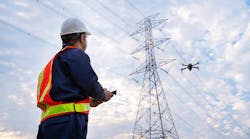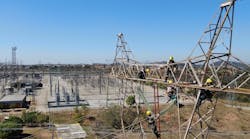After an insightful discussion with American Electric Power's Senior IT Architect Stephen Payne, I had the following conversation in October 2017 with Shane Forrestal, data scientist at American Electric Power. Forrestal presented at Utility Analytics Week with his co-worker Stephen Payne, in a session titled “A Qualitative Approach to Customer Segmentation.”
Shane Forrestal started his career in Load Research, where he was responsible for grid/meter analytics, and upon formation of a Customer & Grid analytics Group, he transitioned to his current role of Data Scientist. His primary focus is now on in customer analytics. While he also still does work on the grid/meter side, his primary Customer Analytics work is centered on Customer Segmentation Analysis and Propensity Modeling.
PM: What is the focus of your work as Data Scientist at AEP?
SF: The Data Scientist role is part of our Customer and Grid Analytics Group. When this group was formed, several of us came in from the Load Research Department, where we were initially doing a lot of the meter and grid-related analytics work. Our work was also focused on equipment and asset health, along with some transformer related data work
PM: To go past smaller pilot programs takes a big mandate for the markets to have a regulatory foundation. Do you see opportunities now to do things on the customer side of meter in a bigger way?
SF: Absolutely! It is a very exciting time for AEP now. There are great opportunities across our various service territories, and there is a lot we can and are doing, from a customer’s prospective. Key big value areas with respect to advanced analytics that are of interest for us are Customer Segmentation and Big Data.
Of the 11 states where AEP operates, it is only in Texas, where we do not have detailed customer data, that the type of customer segmentation work I am describing is not currently going on.
PM: What value are you seeing when it comes to the collaborations you are involved in at Utility Analytics Institute?
SF: We learn about best practices and advanced analytics work of other utilities, and also we learn from other utilities’ mistakes as well. And since we have been growing rapidly in our Customer Segmentation work, we have been finding that the exchange of related ideas with other utilities on similar paths has been very helpful. Simply put, it has been saving us a lot of time, because we also have learned a lot of cool techniques and shortcuts in addressing challenges.
PM: What are the biggest challenges you see when it comes to Customer Segmentation work?
SF: First, on the positive side, is the challenge of optimizing the outreach to the segments which are most likely to engage with us in important new programs. For this, our advanced work in Customer Segmentation, which we are presenting on at Utility Analytics Week, tells us which segments to focus our marketing efforts on. And then on the other side we are addressing challenges with customers that are indifferent to their utility, or for other reasons simply do not want to hear from their utility.
Obviously we are a large provider, with 5.5 million customers, but optimally we should not try to reach out to them in a million different ways, so we have been finding groups of customers based on preferences where we can provide the maximum value, and improve the customer experience. And our UAI work has taught us a great deal about the range of issues and options, exchanging ideas and best practices. Optimizing modelling approaches, for example when it comes to leveraging metering data, has been a great area where that kind of value from our UAI work has been very beneficial.
PM: What analytics advancements most excite you?
SF: Along with our Customer Segmentation modeling, I would say our current work with Propensity Models has been providing increasingly exciting value for us. Segmentation tells you who to reach out to, and Propensity Models tell you how best to spend your marketing dollars to maximize the likelihood your outreach will be most effective.
Another big area of interest with exciting potential is disaggregation of load. Consider if you could tell from meter data what major appliance loading was actually going on, circuit by circuit, on a customer’s breaker panel. You could optimize peak demand reduction in ways that would create a great deal of shared value for you and your customers, while minimizing any perception of change in how those appliances were running. And you could even send notice to your customers that the load profile indicates their appliance is about to fail, or is wasting energy due to something being wrong (a door open or leaking on a refrigerator, or an air conditioner running at full blast with windows open on a hot day, or a water heater leaking and flooding a basement or garage, etc.).
PM: What lies ahead on your advanced analytics journey?
SF: Top of the list? Big Data. We are looking at all of the incoming data and where you store it, and how to optimize the processes for our employees securely accessing it. We currently have 1.6 million advanced meters, and around this time next year, it will be closer to 2.5 million in our AMI system, and with 96 meter reads per day for each of them, across 4 or 8 channels, you are talking about our adding a billion rows of data to our database for this every day. We have a Hadoop environment, and so far it is scaling up very well. And we have more data coming on, for example with more in-home programs, and we also have more internal users wanting where our ensuring our employees accessing the data optimally is a key design criterion for us. We are insuring we have the needed and proper infrastructure to use that data optimally. Between more sensor data on top of this, from an IT / OT and IoT point of view, we're going to be tracking not only the AMI data, but also the operational data from distribution feeders to distribution substations, and on up to the sub-transmission and transmission system lines and substations.
Along with Big Data, another big part of our path ahead involves more work on our Propensity Models, which help us determine how to optimize our outreach to those segments, with the best marketing programs based on what people are interested in, and with strategies for communicating to those segments in the most effective ways based on allocation of marketing funds to achieve the highest likelihood of good levels of participation.
Another big thing that is coming up is disaggregation of load. From your panel at home what is drawing the most power what is the load shape of your refrigerator for example being able to have a smart panel that could tell you that something is wrong with major appliance because of how it's behaving would be very valuable. So there's a big push around the Smart Home. So which especially that Peak vs. Off-peak times can you do the most with.
A delineating factor involves differences in geography. Meters are meters. The reads are the reads. So it is all about customer behavior and distinguishing between faults and mis-reads and diversion of power, if you will.
Over-riding all of these things is the need for a systematic way to approach it.
PM: It all reminds me questions about the countdown process NASA developed to address the high complexity of the Apollo mission to the moon.
SF: Yes, the analogy fits. We are going through a paradigm shift now. And we are learning new systems and solutions to address the shift. We are learning new software languages as well.
PM: Well let’s take what you just said about paradigm shifts, and go back to the origin of that term, in the book The Structure of Scientific Revolutions by Thomas Kuhn—he gave the example of the paradigm shift when scientists thought the earth was at the center of the solar system, to when they started to shift to the model we now have where the sun is at the center. During the shift, those who held on to the old geocentric model had to add difficult new epicenters to their theory, every time a new planet was discovered.
What would the similar “symptom” be, of a utility organization mistakenly running on the old paradigm when they should have shifted to the new one, but is instead adding “epicenters” to their model, if you will?
SF: I’d say the general pattern should be that your technology changes lead you to make wise choices for related changes in the tools you utilize with the new technologies, and ultimately those first two changes then get reflected in ways you address your outward-facing modelling for your internal customers.
As a specific example of the sort of “old paradigm epicenter” situation you suggest, I would think about how it would be if a person were in a position like mine as a Data Scientist, and instead of using the new tools for Big Data, like Hadoop, as we are doing, they instead continued to build bridges between their big data repository, and their utility’s older systems.
So let’s say this hypothetical data scientist gets a request from one of their internal customers to pull data down to and send it to them in a form compatible with their older system. That is great, to be able to help, but in the long term, I would argue that our hypothetical data scientist’s time would be better spent using the more advanced tools in Hadoop and ensuring workflows are done in the new systems.
As a result of our recognition that we are in a paradigm shift, we are exploring how to use the new tools, and are investing time and resources into using new tools optimally. It is a very steep learning curve for some, but I think it is something that has to be done, if you want to improve upon and increase levels of internal and external customers’ experience. You have to shift to new ways of doing things and new tools to get you to new levels of operational excellence.
PM: so you may, with the new tools, see new things that you have not seen before—for example perhaps the tweak to a customer segmentation may involve not just zip code and typical customer demography around age, education level, earnings, but also who within that sub-segment also shops at the local Whole Foods?
SF: If only we had that level of granularity! But it is going to become a source of increasing value as we optimize customer segmentation and propensity models in order to help our internal customers better serve our external customers. Ultimately that is how we can help maximize value we deliver, as a utility, to our customers.
Do you have a great analytics case study or project to share? Utility Analytics Institute is now accepting proposals for sessions at Utility Analytics Summit, April 16-18 in Irvine, CA. link: http://utilityanalyticssummit.com/speaking-opportunities/



